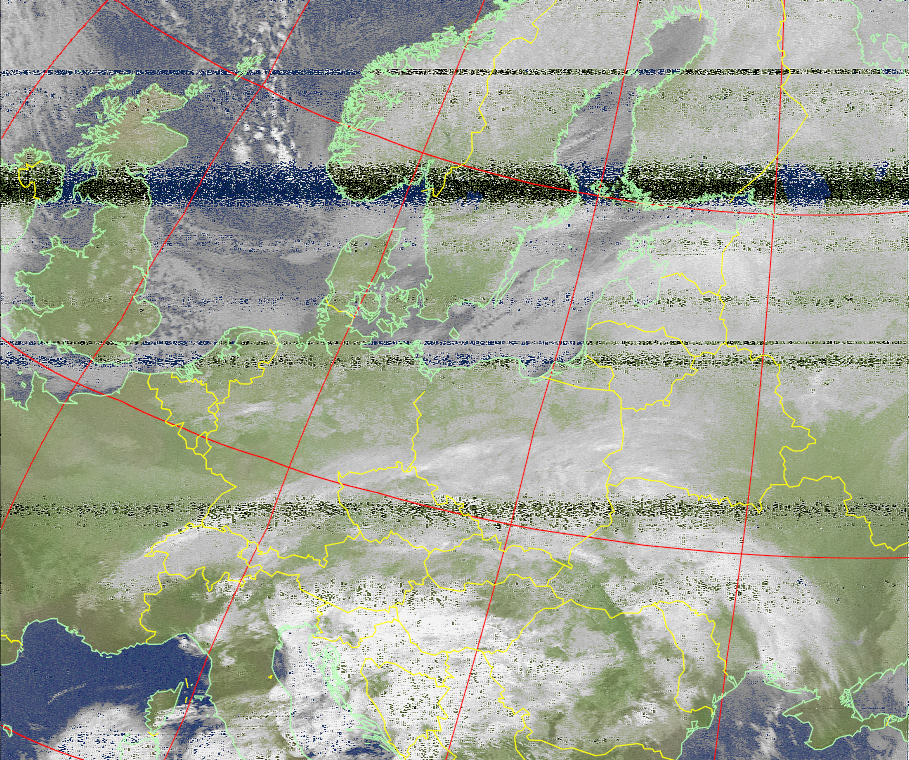I followed the instructions on this site https://www.instructables.com/Raspberry-Pi-NOAA-Weather-Satellite-Receiver/ to install all the software required on my new model 4b. There’s an issue with the software used to predict the passes (oddly enough called predict) which requires an additional 3 files to be installed or you’ll never initialise the program with your latitude/longitude details. These are:
wget https://raw.githubusercontent.com/kd2bd/predict/master/default/predict.dbwget https://raw.githubusercontent.com/kd2bd/predict/master/default/predict.tlewget https://raw.githubusercontent.com/kd2bd/predict/master/default/predict.qth
and put into the same directory as predict itself; namely ~/.predict
My Nooelec/Sawbird+NOAA combination was plugged into one of the Pi’s USB3 sockets, antenna connected (still Diamond V2000) and the wait was on for the passes to arrive. The first two passes scheduled were low northbound with maximum elevation of only 29 degrees. You can see the results below:


The next two passes were higher with maximum elevations of 63 degrees.


So – excellent results! That really concludes the indoor experiments. Sure I may add some code to upload automatically images to this blog – maybe a specific page. And of course add a 7″ screen to the Pi to display the images. I need to get that turnstile antenna assembled and installed though!
In conclusion it is a bit of a faf to receive weather satellite images on the Pi. There is far more work involved than on a PC. And that is even with the three scripts used already being written for you to use or modify as you wish (incidentally some of the comments on the web site I linked to earlier are pretty good, and you learn more about how to fine-tune the set-up). However the convenience of having the Pi tucked away somewhere on the floor, behind the desk, with the small Nooelec devices attached with the antenna lead-in, are large. You don’t have to tie your PC up when it could be doing something else – like recording the MF band overnight for example!
N.B.
Couple of things I’m wondering about and need further investigation. Firstly the Pi images seem to be “cleaned-up” when compared with the same images obtained by loading the wav file into the PC version of wxtoimg. Secondly the images I’ve labeled as MCIR with precipitation enhancement don’t appear to be that enhancement (there is no colour). Watch this space…
